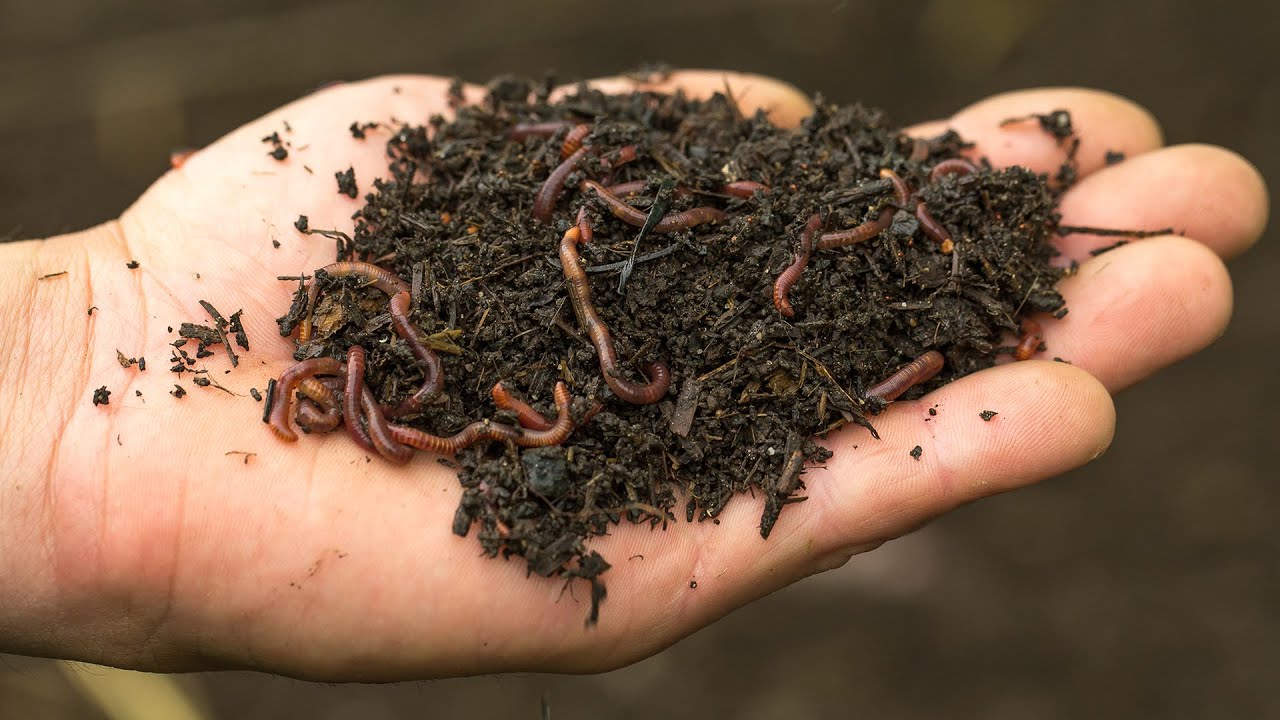Recognizing the Advantages of Red Wiggler Composting: Just How This Effective Method Changes Organic Waste Into Nutrient-Rich Soil Changes
Red Wiggler composting, utilizing the species Eisenia fetida, provides a compelling approach to natural waste management, converting kitchen scraps and lawn particles into beneficial soil modifications. This technique not only boosts dirt fertility yet additionally addresses pressing environmental concerns, consisting of garbage dump waste reduction and greenhouse gas exhausts.
What Are Red Wigglers?
Red wigglers, clinically called Eisenia fetida, are a species of earthworm that play an essential function in vermicomposting systems. These worms are characterized by their reddish-brown shade, segmented bodies, and a distinct ability to prosper in organic-rich atmospheres, making them excellent for composting applications - Red Wiggler Composting. Unlike their garden-dwelling counterparts, red wigglers like to inhabit the top layers of soil, where rotting issue is bountiful
Typically measuring in between 3 to 4 inches in size, red wigglers have a high reproductive rate, enabling them to multiply quickly under optimum problems. They possess a special digestion system that enables them to refine natural waste effectively, converting it into nutrient-rich castings, which are very valuable for plant development.
Their tolerance to varying dampness levels and temperature level varies better enhances their utility in vermicomposting setups, making them a preferred choice among composting fanatics. Furthermore, red wigglers are cardiovascular organisms, which necessitates a well-aerated composting atmosphere, making sure reliable disintegration. Understanding the biological attributes and behaviors of red wigglers is crucial for maximizing their use in lasting waste management practices.

Advantages of Vermicomposting
Using the power of vermicomposting deals a plethora of farming and environmental benefits. Firstly, it considerably reduces natural waste in landfills, therefore lessening methane emissions, a potent greenhouse gas. By diverting food scraps and backyard waste to vermicomposting, we support a more lasting waste administration system.
Furthermore, vermicomposting boosts dirt health. The spreadings generated by red wigglers are abundant in vital nutrients, microbes, and enzymes, improving dirt structure and fertility. This nutrient-rich change promotes durable plant development and boosts water retention, reducing the requirement for chemical fertilizers.
Additionally, vermicomposting fosters biodiversity in the dirt ecological community. The introduction of helpful bacteria from worm castings aids in illness suppression and nutrient biking, developing a much healthier atmosphere for plants.
Financially, vermicomposting minimizes the costs connected with chemical inputs and waste disposal. Gardeners and farmers can grow top notch fruit and vegetables at reduced expenses, adding to food protection and sustainability.
How to Start Composting
Beginning a composting venture can be a satisfying and uncomplicated procedure. This will help preserve a balanced temperature, essential for the composting procedure.
Collect natural products such as kitchen scraps, lawn waste, and shredded paper. helpful resources Go for a well balanced mix of 'environment-friendly' materials, high in nitrogen (e.g., fruit scraps, coffee premises), and 'brownish' materials, abundant in carbon (e.g., dried fallen leaves, cardboard) A proportion of roughly 2:1 eco-friendly to brownish materials is optimal.
Beginning layering your products, ensuring adequate air blood circulation by turning the stack consistently. This promotes cardiovascular disintegration, decreasing odors and speeding up up the procedure. Display moisture degrees; the garden compost must seem like a damp sponge yet not overly wet.
Nutrient Account of Vermicompost
Composting, specifically with red wigglers, yields a nutrient-rich item known as vermicompost. Furthermore, it offers trace elements like calcium, magnesium, and iron, fostering durable plant development and boosting dirt health and wellness.
The microbial task existing in vermicompost better enhances its profile, introducing valuable bacteria and fungi that promote nutrient schedule and uptake in plants. This biological part aids in suppressing plant illness and boosting dirt structure, causing improved water retention and aeration.

Ecological Influence of Composting
The ecological impact of composting, particularly through the use of red wigglers, is profound and multifaceted. This technique dramatically minimizes the volume of organic waste sent out to garbage dumps, which subsequently minimizes greenhouse gas emissions, specifically methane-- a potent contributor to environment change. By diverting natural materials from land fills, red wiggler composting not only helps minimize ecological degradation yet likewise promotes lasting waste monitoring practices.

In addition, composting adds to carbon sequestration, as the process catches co2 from the ambience and stores it in the dirt. This all-natural process help in combating climate modification while enhancing the soil - Red Wiggler Composting. On the whole, red wiggler composting provides a sensible, eco-friendly solution for waste administration and ecological sustainability, advertising much healthier environments and a much more sustainable future
Conclusion
In final thought, Red Wiggler composting acts as an effective method for transforming natural waste into valuable dirt modifications. The process not just enhances soil fertility and structure however additionally mitigates ecological concerns related to garbage disposal. By using Eisenia fetida, this type of vermicomposting contributes to boosted biodiversity and supports lasting agricultural practices. Eventually, Red dig this Wiggler composting plays an important duty in promoting healthier communities and resolving the obstacles of environment adjustment.
Red Wiggler composting, utilizing the species Eisenia fetida, provides an engaging method to organic waste administration, converting kitchen area scraps and yard particles into valuable soil changes. Unlike their garden-dwelling equivalents, red wigglers prefer to live in the top layers of soil, where rotting matter is abundant.
The castings generated by red wigglers are abundant in important nutrients, microorganisms, and enzymes, enhancing dirt framework and fertility. The nutrient-rich by-products of red wiggler activity enhance soil see it here structure, boost water retention, and advertise biodiversity within the dirt community.In final thought, Red Wiggler composting serves as an effective technique for transforming natural waste right into useful soil modifications.
Comments on “How to Maximize Your Red Wiggler Composting Performance for a Greener Yard”